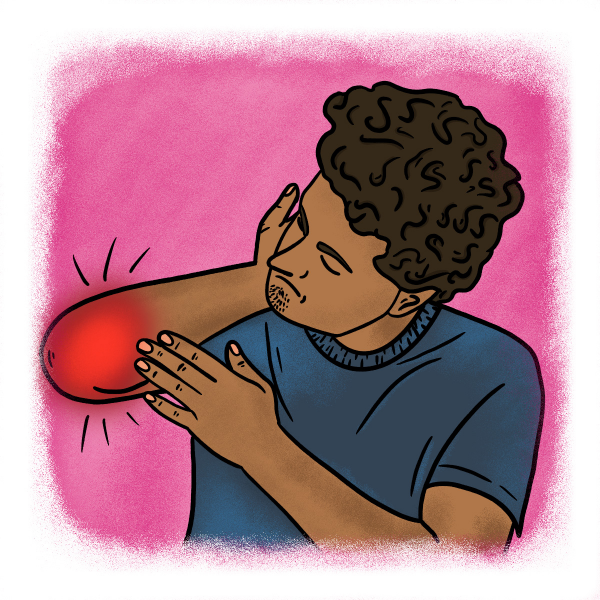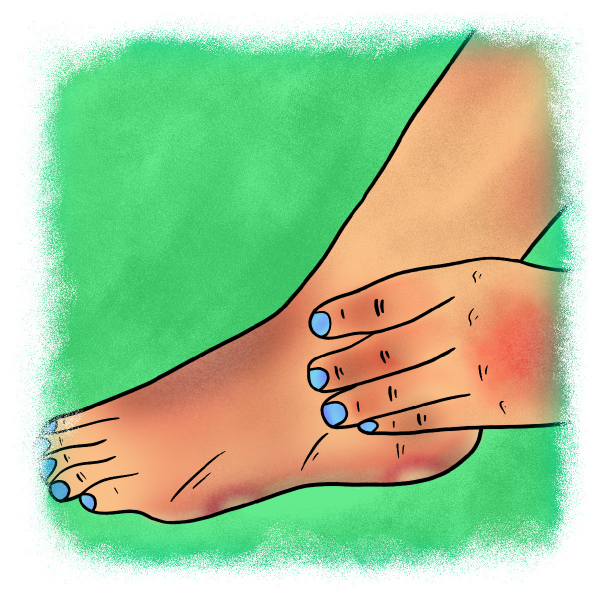Skin Symptoms With Psoriatic Arthritis: It Is Not Always Psoriasis!
Psoriatic arthritis (PsA) is commonly associated with the skin condition psoriasis. There's no surprise there, considering that 4 in 10 people who live with psoriasis go on to develop psoriatic arthritis. While most people develop psoriasis first. PsA typically emerges about 7-10 years later.1
Did you know that it's possible to have PsA without a psoriasis diagnosis? It's considered rare but also reported true.
Start a Forum
Is it possible to have psoriatic arthritis without psoriasis?

Psoriatic arthritis is considered a progression of psoriasis - where the inflammation of the skin passes to the inflammation of the joint. You can consider inflammation the gift that keeps on giving.
For most people with PsA, psoriasis precedes the onset of arthritic symptoms, but some people develop skin disease after the onset of arthritis. Less commonly, people with psoriatic arthritis may never develop psoriasis, but they often have a family history of psoriasis or psoriatic arthritis.1
A look at other non-psoriasis skin symptoms
Psoriatic arthritis is a unique condition, and those who live with it agree. It shouldn't be lumped in with psoriasis or any arthritis condition, for that matter. It has its own onset of unique and painful symptoms that some patients don't even consider psoriasis related.
In fact, many people with PsA have skin symptoms that are not psoriasis. To learn more from real patients, we turned to our Psoriatic-Arthritis.com Facebook community and asked, “Some people with PsA may experience skin symptoms but aren't diagnosed with psoriasis. What kind of skin symptoms do you experience?”
Here are some of the main skin symptoms respondents described.
Rashes, hives, and rosacea

Skin symptoms that many people mentioned were rashes, hives, and rosacea. Rashes look like blisters, patches, or welts. They are typically red and often feel itchy. Rashes can cover one area or spread over the whole body.2
Hives are a specific type of rash. They are raised, itchy bumps, often with defined edges. They can be skin-colored or red. Hives turn white when you press on the center.3 Another type of rash can occur with rosacea. This condition typically causes redness and visible blood vessels on the face. But it also can cause raised bumps that look like acne.4
- “I’ve had urticaria – severe hives all over my body. It’s very painful and takes a lot of prednisone to get it under control.”
- “I have psoriasis, but I also have hives every now and then.”
- “A weird, heat-based friction rash I didn’t have before the meds. The dermatologist told me it’s a normal response to biologics.”
- “My skin used to be smooth, but now it’s rough like I have a slight rash that never goes away.”
- “Rosacea.”
Sun exposure triggers
Sun exposure can be a trigger for skin symptoms. A few people living with PsA said they react strongly to being in sunlight. Their skin breaks out in red bumps.
- “If I’m out in the sun too long, I get a red (not sunburn) splotchy rash-like reaction, or my skin will get inflamed with small bumps.”
- “Any sun exposure and I break out in red spots.”
Invisible itch
Some community members also mentioned feeling itchy without visible signs of rash or hives. It feels like creepy crawlies all over their bodies and a constant need to scratch.
- “Itching skin, but can’t see anything on the skin.”
- “Like a million little bugs crawling on you.”
- “The feeling of crawling on my face.”
Dry skin
Another common skin symptom is dry skin. You may get flaky patches on various body parts. Your skin may feel dry and rough.
- “Mostly on my elbows, dry, flaky skin that wants to chunk off but gets worse if I try to remove it.”
- “Flaky scalp along the hairline.”
- “Painless, sudden, unexpected, and sexy shedding of skin.”
Issues on the hands and feet

Some community members mentioned skin issues that specifically target their feet and hands. These symptoms make it difficult to walk or perform tasks.
One of the conditions mentioned was palmoplantar pustulosis. These are tiny, fluid-filled blisters on the palms and soles of the feet. The blisters turn brown, then get thick, red, and scaly. They may begin to crack.5
Pustular psoriasis is another condition that affects some people in the PsA community. These are pus-filled bumps that can cover the body. They look red and scaly, and they often join and burst. Pustular psoriasis requires immediate medical attention when it is widespread.6
- “Tight feeling around my feet. It’s hard to move my toes.”
- “Palmoplantar pustulosis on my hands and feet.”
- “Hands get bright red, and knuckles split open.”
- “Pustular psoriasis for me, rather than plaque psoriasis. Mainly affects my hands, forearms, feet, and calves.”
Fingernail and toenail problems
The nails are another area affected by PsA. The nail color may change, and they may be brittle and break easily.
- “My nails aren't pitted, but they constantly split and break. My toenails just fall off. I have cuticle infections at least 1-2 times a year.”
- “I have nail lifting, crusty and yellow.”
Every psoriatic arthritis experience is unique
Here at Psoriatic-Arthritis.com, we're so grateful for the supportive community that consistently shows ups and shares their experiences. It not only helps people feel less alone but allows us to raise awareness for this unique and stand-alone condition.
While psoriasis management may be a part of the journey for some PsA patients - that's not the universal experience. If you have a unique perspective related to your psoriatic arthritis that you'd like to share - we're excited to hear it.
Our community is here for you - with listening ears and unrequited support.
This or That
Do you also find it painful to sit for extended periods of time?

Join the conversation